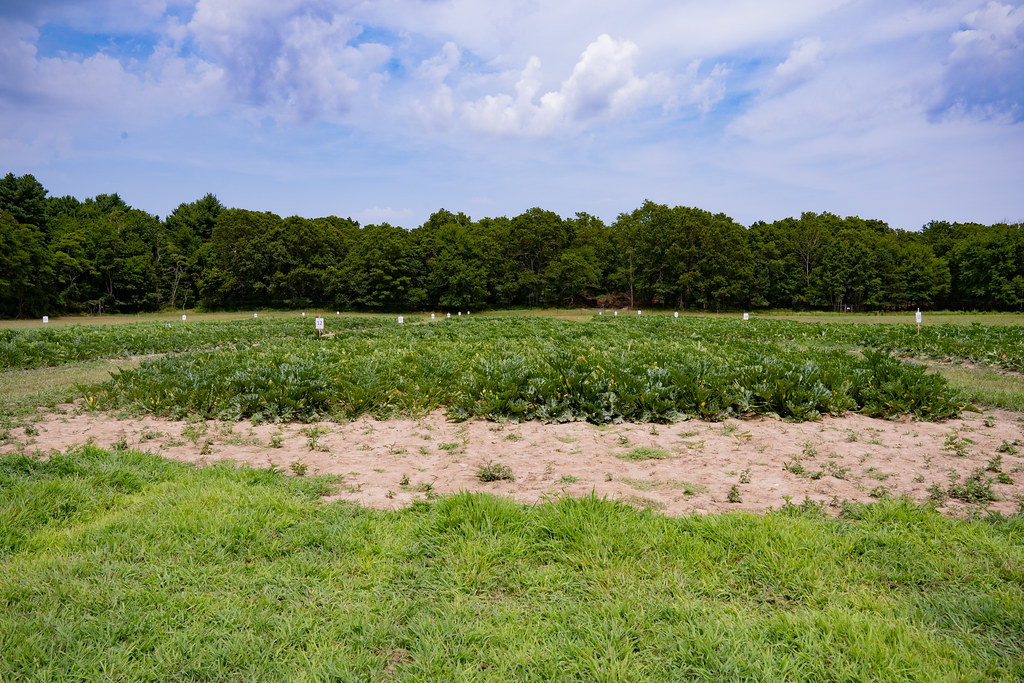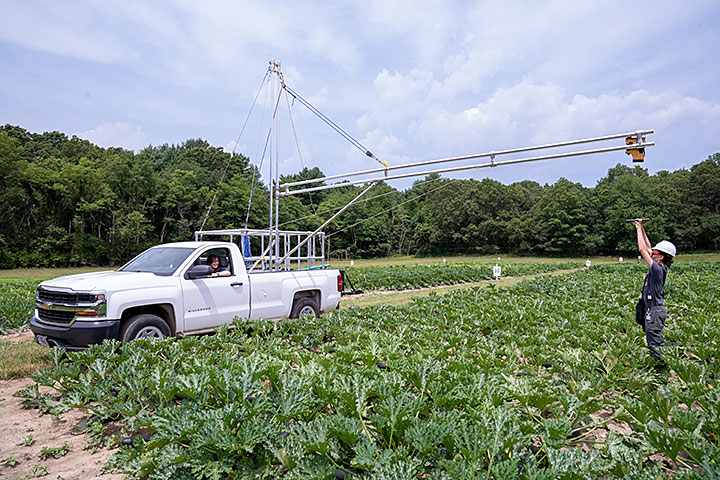Tackling Food Insecurity with Remote Sensing
New remote sensing experiment at Brookhaven Lab aims to improve crop breeding and management
November 14, 2019
Biologists at the U.S. Department of Energy’s (DOE) Brookhaven National Laboratory are experimenting with remote sensing techniques to improve crop breeding and management. Compared to traditional measurement techniques that take place on the ground, remote sensing techniques use satellites and cameras high above the earth’s surface to collect data on the optical properties of plants. Remote sensing techniques are faster, less destructive, and cheaper than traditional measurement techniques, but before they can be implemented at a large scale, scientists must first gain a better understanding of the relationship between remote sensing data and plant traits.
In past experiments, scientists at Brookhaven have used remote sensing techniques to track a variety of environmental patterns, such as forest fire recovery and seasonal changes in the amazon. In the new experiment, led by Angela Burnett in the Lab’s Environmental & Climate Sciences Department, scientists are growing zucchini plants under different conditions and determining if remoting sensing techniques can detect changes in the plants faster than other techniques can. While some zucchini were grown under ideal conditions, others were exposed to stressors like drought or metabolic manipulation. If remote sensing techniques can identify the stressed plants sooner than traditional ground techniques can, the study will point towards improved practices for crop breeding and management.
 Hover over image to reveal slideshow controls.
Hover over image to reveal slideshow controls.
To collect their data, the Brookhaven scientists are using a truck-mounted boom that extends a camera several meters into the air over the center of each zucchini plant area. The team is also taking hand-held spectrometer measurements and harvesting leaf samples that they will freeze in liquid nitrogen. By collecting leaf reflectance data at the leaf scale, the canopy scale, and from the air using unmanned aerial systems, and comparing that data with physiological and biochemical data from the ground, the scientists will be able to determine the role and effectiveness of remote sensing techniques for crop breeding and management.
Brookhaven National Laboratory is supported by the U.S. Department of Energy’s Office of Science. The Office of Science is the single largest supporter of basic research in the physical sciences in the United States and is working to address some of the most pressing challenges of our time. For more information, visit https://energy.gov/science.
Follow @BrookhavenLab on Twitter or find us on Facebook.
2019-16766 | INT/EXT | Newsroom










